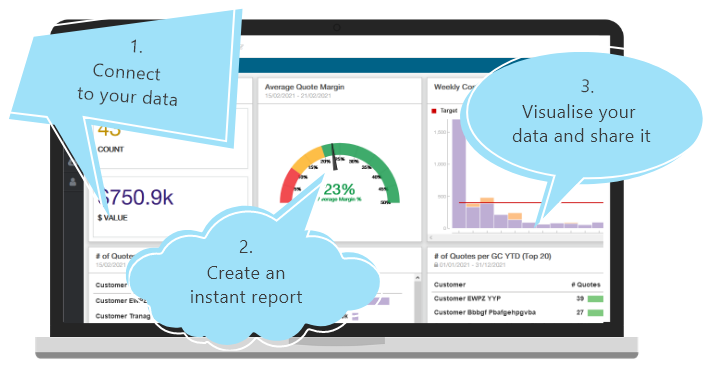How to Avoid Painful Pricebook Mistakes in ServiceTitan
Finding it painful to manage your Pricebook in ServiceTitan? Is it hurting your staff’s efforts to deliver quality service and grow revenue? Ideally, you need good organization in your pricing structure, accuracy in the pricing of your services, equipment and materials, linked services and so on, and efficiency in your pricebook maintenance. But that can prove a hard task.
In this article, we highlight some painful mistakes that users make in ServiceTitan, that you can avoid. We also offer a better way for you to manage your Pricebook.
Mistakes to avoid
We know from other ServiceTitan users who’ve taken on the task, or rebuilt their pricebooks, that it can take hours a week, up to months to get right. In a poll conducted among a Facebook community for ServiceTitan users, 42% said their Pricebook still wasn’t set up after three months of trying. Straight out of the blocks, this may be the first mistake to avoid:
1. Don’t expect your Pricebook setup to be a quick, easy task for one admin person.Factor this into your planning: it’s going to take up a hefty chunk of time. And probably more than one pair of hands on the job. You definitely need an Excel spreadsheet maestro. And they’ll have to stay on it forever to update your pricing info and ensure it’s correct. We see 3 problems with this:
- It ties up precious manpower that you could use better elsewhere in your business - talk about springing a productivity leak!
- It costs you time and salaries.
- Human error is inevitable, and also the subsequent costs of incorrect quoting and invoicing, time delays, compounded errors, and poor morale.
If only your pricing data would update automatically somehow, you could avoid all of this. But such is the nature of the ServiceTitan Pricebook.
2. Don’t fiddle with columns, categories or the Excel template itself.
Early in the setup process, you’ll encounter the ServiceTitan Pricebook Excel template. Mistakes committed at this stage will trickle all the way through the system.
Setting up categories and subcategories directly affects output - specifically mobile. For some reason, the way a service or equipment item is assigned to a category is different than materials: if services and equipment aren’t properly assigned a category or subcategory, they won’t be visible in your mobile output, while materials will be visible in ServiceTitan Mobile either way. Beware the Excel traps:
- Don’t add or delete columns because you figure it’s just another spreadsheet and you can customize it however you want to. You can’t.
- Don’t assume it’s safe to use the category columns on the spreadsheet to set up all your categories and subcategories. It's not.
- Do set up categories inside your ServiceTitan Pricebook before exporting to Excel for editing, and leave that template be.
Each category must have a column assigned to it in logical sequence: the first column for the main/parent category, for example, HVAC; the second for subcategories like duct cleaning or new equipment; a third column for subcategories within a subcategory. You get the idea.
3. Don’t accidentally click any cancel buttons on your spreadsheet.
Follow this simple, practical tip if you want to avoid the pain of seeing hours and hours of meticulous data inputs disappear into the ether.
Each tab on your Pricebook Excel spreadsheet has a cancel button - if you click any of them, it will discard any and all unsaved changes in all the tabs.
4. Don’t include too many choices or miscellaneous items.
Remember when it was just easier to create a one-off service price because it was faster than finding the right item in a cluttered pricebook? Could be at the time there was bad labeling and organization, or too many choices. Over time, miscellaneous, one-off or too many items create a lot of confusion. This is painful for the admins in charge of your Pricebook because it takes additional hours to root out and fix those items, and slows down maintenance.
Adopt a culture of precision in pricing to avoid all that:
- Label and itemize correctly
- Separate out equipment from materials
- Add clear, thorough descriptions and pricing.
Technicians will struggle less to find items to quote on. They won’t be tempted to disguise an upcharge as a miscellaneous item, and then pocket the difference. Uniformed labeling organizes the numbers for better reporting, which makes life easier for project managers tracking discounting trends and setting targets for their techs.
5. Don’t deactivate supplier catalog items linked to other services.
Having supplier catalogs integrated with your ServiceTitan Pricebook enables you to check availability of any items you want to include in a sale. You also have the ability to deactivate a catalog item from your pricebook. But: keep in mind that items may not exist in isolation - making changes may affect other service items.
Let’s say that you prefer your techs to select a piece of equipment from supplier A over the same equipment from supplier B wherever possible. So, you deactivate supplier B’s item from your pricebook. But the deactivated item is attached to another item in your pricebook as a recommendation or part of an upgrade option.
You definitely want any upgrade options available to present to customers as a way to increase revenue. Except now you can’t because deactivating it made it invisible in your pricebook. It won’t appear in future catalog updates either. Oops.
6. Don’t include supplier catalog items in a sale without checking you’ve got the right price.
Even with a supplier catalog integrated with your ServiceTitan Pricebook, it’s no guarantee that the price is right for the stock you intend to order. Remember, the info pulling through from your pricebook when you add a line item to purchase order is specific to that supplier. It uses the part number and pricing as per your original mapping of the item from the supplier catalog. Apply some brakes here:
- Create a new purchase order.
- Do a real-time inventory availability check with the supplier first.
- Wait for confirmation that the stock you want is available at the cost you’ve got in your Pricebook.
- Then match the supplier pricing for that item and update your pricebook with any changes.
In fact, just adopt a check-first discipline. While the system provides notification of available updates, it won’t actually make the updates for you. An invoice can easily be generated before your admin person has a chance to check the validity of the pricing info included in that invoice, or to update it.
There won’t always be discrepancies, but it’ll matter to the customer who gets charged incorrectly because nobody checked first. With some efficient communication and quick action, your team can remove the errant item from the invoice and add it again once the pricing adjustment is done. Then you must hope the customer is patient and forgiving.
Manage ServiceTitan Pricebook without all the drama
Nobody should be burdened with investigating update notifications before updating your ServiceTitan Pricebook. Or jeopardize your pricing accuracy! You can do better. Connect to Wink Reports and avoid all the drama:
- Have certainty that the equipment pricing on a new invoice matches with the supplier’s prices right now without having to check first.
- Improve your Pricebook efficiency when we connect to your supplier’s API , we detect any pricing changes and we update the data in real time.
- Avoid building or rebuilding your Pricebook from scratch by manually uploading individual items one by one.
- Never again worry about all those painful mistakes when Wink automatically updates pricing data to give you an accurate, fully dynamic ServiceTitan Pricebook.
Sign up to Wink now for an organized, efficient and accurate Pricebook in ServiceTitan.





